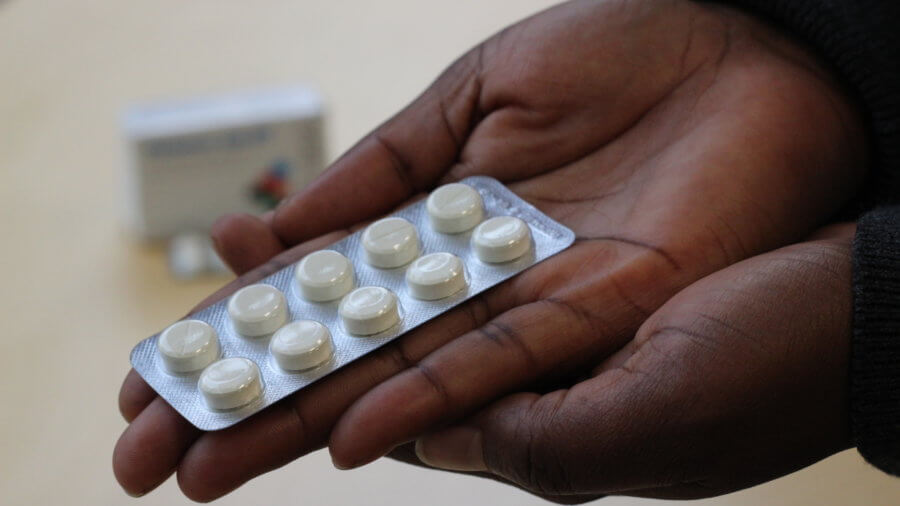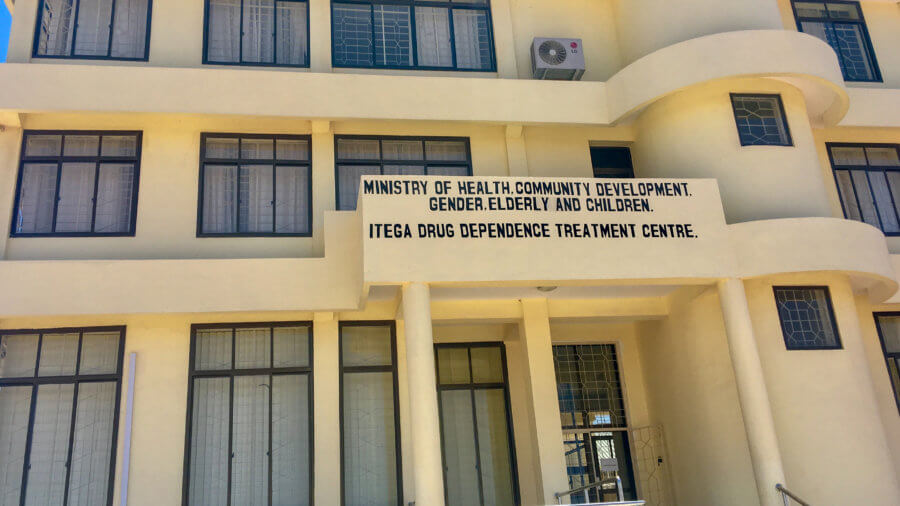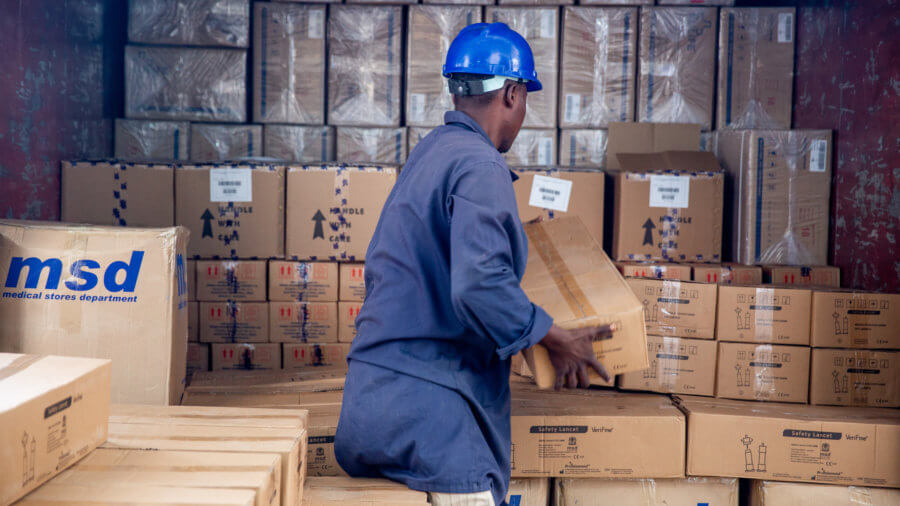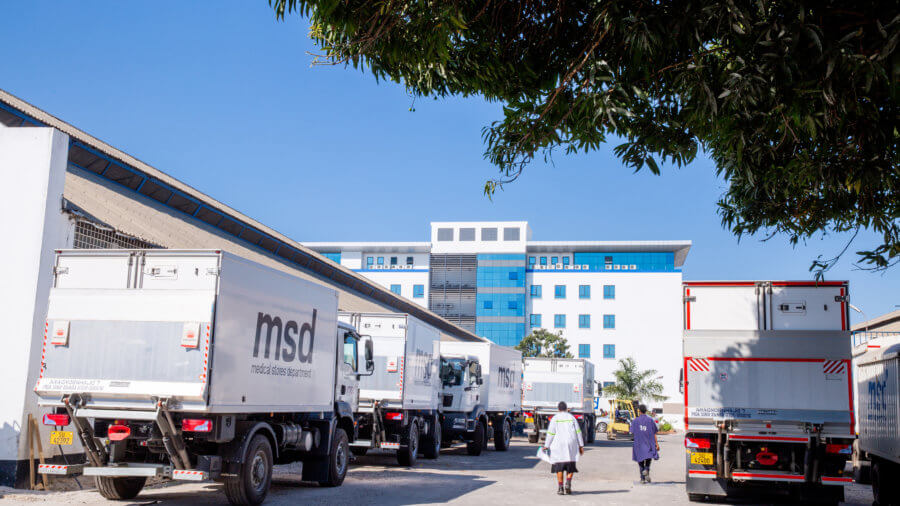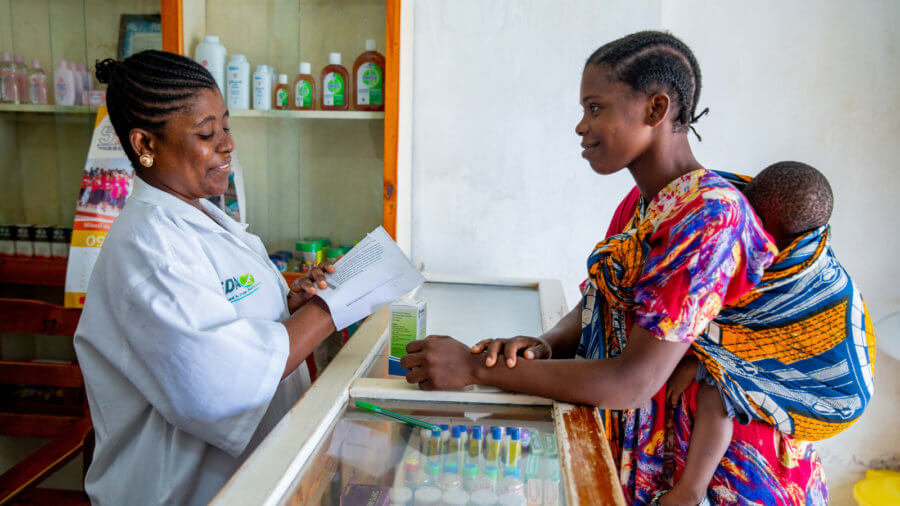Results at a glance
Pneumonia has been a particularly vexing problem in Tanzania, where it has in many years accounted for 15% of child deaths. The government has been able to achieve significant declines in child mortality rates for malaria and HIV/AIDS in recent years, but rates for pneumonia have only dipped slightly. With its goal of reducing child mortality by 80% by 2030, the government has prioritized efforts to address childhood pneumonia.
The government’s commitment has made Tanzania an important learning case. Since 2015, Results for Development has been supporting the government of Tanzania in implementing a holistic market shaping program to address the underlying systemic factors affecting whether amox DT is available at a health facility and if it’s accurately prescribed to the children who need it. This story highlights what progress the government has made (and how):
Read on to find out how the government achieved these results in a few short years — and hear from the change agents who made it possible.
A funding crisis in Tanzania
As part of its efforts to reduce childhood deaths from pneumonia, the government of Tanzania began updating its guidance to health care providers in 2015 to ensure that amox DT would be used as the first line of defense against the illness. But just as this process started, external donor funding for amox DT was about to end. Donor programs that previously funded, purchased and distributed amox DT in Tanzania were winding down — and no transition plan had been developed to address this funding gap.
Without an influx in funding, the supply of amox DT in Tanzania would have quickly depleted — leaving millions of children without treatment.
To prevent any interruptions in coverage, Results for Development (R4D) worked to identify new sources of financing for amox DT and secured funds for approximately 6 million courses of pneumonia treatment. R4D also proposed a distinct approach in supporting the government of Tanzania — one that focused on strengthening the capacities of key government agencies and other market aspects to ensure sustainable access to amox DT long after the program ends.
As part of this approach, R4D worked closely with a range of government partners in Tanzania, including the Ministry of Health, Community Development, Gender, Elderly and Children, to develop a co-financing plan for the government to gradually scale up its funding as donor funding gradually scaled down. This plan provided transparency on the portion of amox DT funding the Ministry of Health could expect to receive support on, and the share that was expected to be mobilized domestically year over year. Moreover, it was an important step toward the long-term goal of sustainable financing for amox DT.
Results: Through the combined contributions of R4D and the government of Tanzania, more than a total of 13.6 million courses were made available for the treatment of childhood pneumonia; 1.6 million of these courses of treatment were fully funded by government-mobilized resources.
While attributing lives saved to a complex and multi-faceted program is complicated, R4D also developed a model to estimate individual-level impact. Based on this modeling, the team estimated that the total number of under-5 deaths averted from 2019-2022 was more than 2,500.
As this catalytic program was developed with sustainability in mind (e.g., a plan for domestic resource mobilization and government-led procurement of amox DT), the team anticipates additional “lives saved” as the Tanzanian government works toward achieving its goal of reducing under-5 mortality by 80% by 2030.
From 2016, the mortality rate fell from 67 deaths per 1,000 live births to 43, a 35% drop, suggesting progress, but there is still work left to do.
Avoiding stockouts & oversupply: ensuring medicine is available when it’s needed
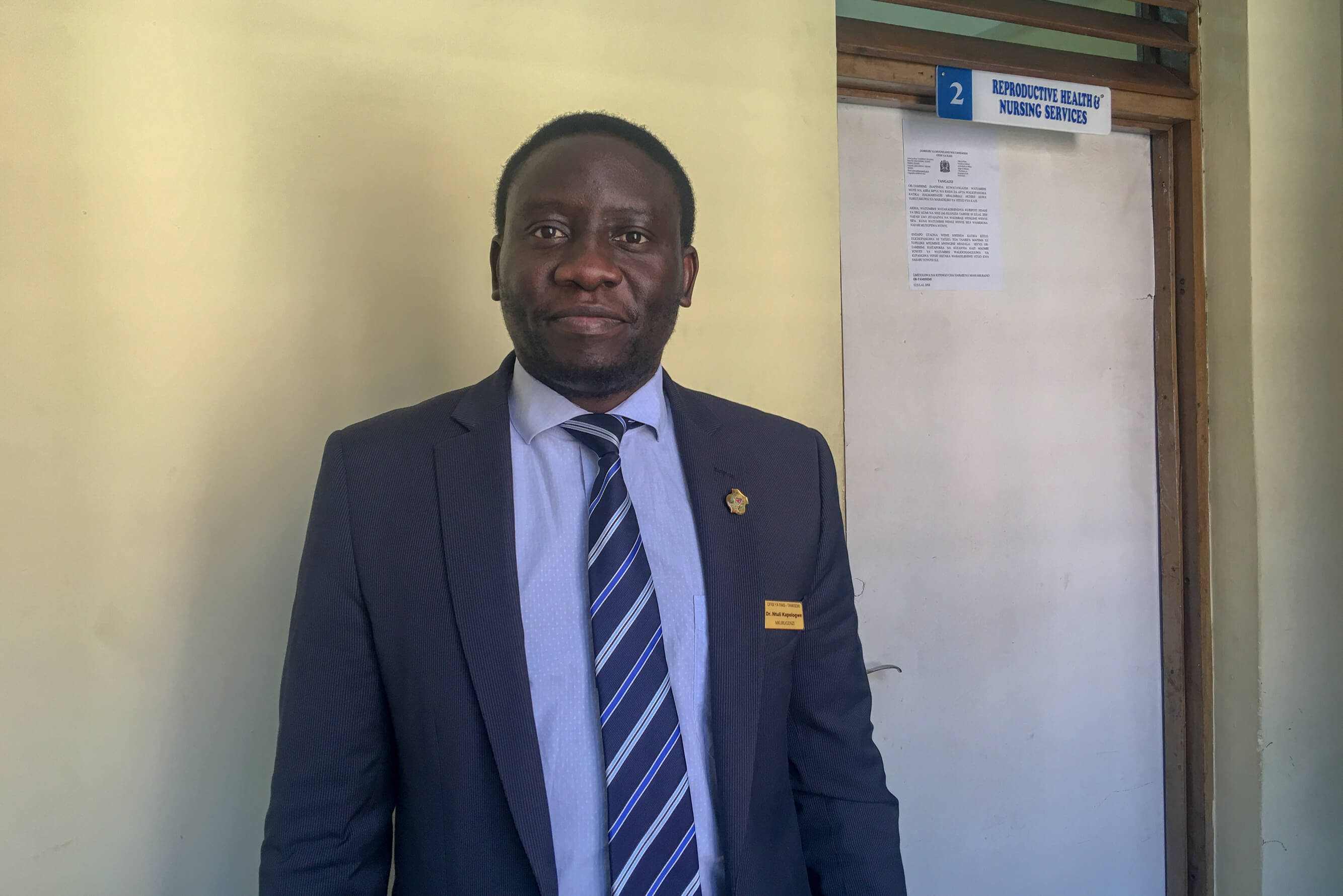
Dr. Ntuli Kapoglowe, program director of health, social welfare and nutrition services for the President’s Office – Regional Administration and Local Government (PO-RALG). Photo © Results for Development/Kelly Toves
Increasing access to amox DT isn’t as simple as securing funding. Knowing how much amox DT to order is a complex task that requires information to be analyzed from multiple data sources.
“To have a constant supply of medicine and to avoid stockouts, you need skilled personnel with good quantification and forecasting skills,” said Dr. Ntuli Kapoglowe, program director of health, social welfare and nutrition services for the President’s Office – Regional Administration and Local Government (PO-RALG).
Dr. Ntuli oversees approximately 7,500 health facilities in the country. It’s a huge job, he said, that requires good information systems and constant communication across regional- and district-level health facilities, the Ministry of Health, MSD and PO-RALG.
For the past 15 years, the government has been working hard to ensure consistent supplies of lifesaving commodities, including amox DT. But one hurdle that has been difficult to overcome is accurate quantification.
“If you don’t focus on improving quantification, you may under-plan or over-plan for medicine and you may end up with expired supplies,” he said. “The quality of data is also important.”
To address this issue, R4D worked with Dr. Ntuli and other government partners to improve Tanzania’s quantification methodology to more effectively predict demand of amox DT. This work focused on expanding the forecasting data to include additional age demographics and incorporating consumption data to reflect actual historic demand into its annual quantification process. For example, in 2019, the previously-used forecast methodology estimated that 27 million tablets would be needed annually; whereas the more complete approach, which accounted for actual consumption and other illnesses that amox DT treats, projected a need of 38 million tablets. After a robust discussion, the government selected the more complete approach to guide their procurement decisions — recognizing that the previous method would have under-anticipated the actual volumes needed for the country.
Results: With more accurate quantification processes, the Tanzanian government is able to better predict an appropriate amount of amox DT to budget for and order. These improvements can lead to fewer shortages or stockouts and a smaller chance of over-ordering, which results in expired supplies. As of early 2022, 90% of health facilities in Tanzania had amox DT available on their shelves (compared to 48% in 2016).
Ensuring government-led amox DT procurement

Medical Stores Department employees tour the warehouse in Dar es Salaam, Tanzania. MSD is responsible for buying and distributing high-quality affordable health products and medicines, including amox DT.
With funding secured and improved quantification processes in place, R4D then provided support to the Medical Stores Department (MSD) of Tanzania to order its first shipment of amox DT. This was a change from the previous practice of relying on external procurement agencies.
The first step was encouraging manufacturers of high-quality amox DT to register in Tanzania. R4D worked with partners to develop business cases to encourage manufacturers to enter the Tanzanian market. The business cases helped to demonstrate to suppliers that there was existing demand for amox DT and helped to clarify the registration process in Tanzania. Once the suppliers applied to the Tanzanian government for registration approval, the Ministry of Health worked to ensure the evaluation process was done in a timely manner. Having multiple high-quality manufacturers registered was an important step since it leads to improved supply security and competition can help drive prices down.
Next, R4D supported MSD in the tender and bid process for amox DT. This required developing new systems and processes within MSD to ensure: the tender (request for bids) is issued at the right time and with the right volumes; bids are received; bids are properly evaluated; and a purchase order is placed and paid in full. This is a complex process that is then repeated multiple times a year.
The key to R4D’s approach is working with and through the government and existing infrastructure. This ensures the procurement process is strengthened and will continue after project funding ends.
Results: As a result of these efforts, Tanzania’s Medical Stores Department has been leading procurement and distribution of amox DT since 2018. Additionally, with increased demand and improved market transparency, there are now eight amox DT manufacturers registered to sell amox DT in Tanzania — which ensures more secure supply.
Improving diagnostics and treatment for pneumonia
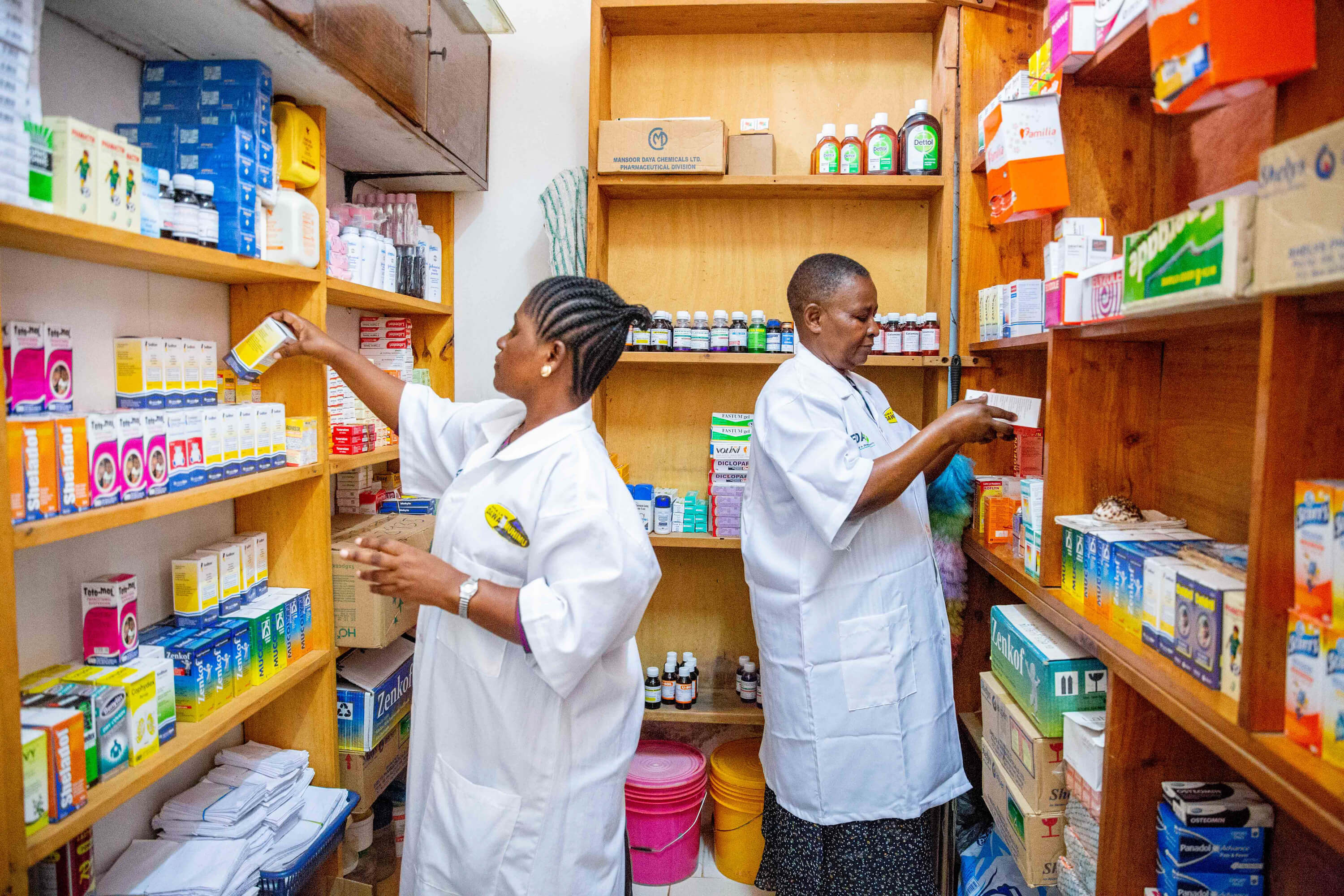
At this Accredited Drug Dispensing Outlet (ADDO) in Dar es Salaam, owner Ester Shoo (L) and staff member Esther Andrews (R) provide R4D’s Tanzania team with a look at their backroom inventory. Alongside the market shaping program, R4D has been supporting the government in conducting monitoring and evaluation activities to better understand misdiagnosis rates and health care providers’ prescription behavior. Photo © Results for Development/Sala Lewis
While ensuring that amox DT is consistently available in health facilities is necessary to lower child deaths from pneumonia, it is not sufficient. Mortality reduction requires health care providers to accurately diagnose pneumonia in children and then prescribe amox DT for treatment.
An important step in shifting provider preference to amox DT over other less effective treatment options, involved updating key regulatory documents such as the country’s Standard Treatment Guidelines, Pediatric Standard Treatment Guidelines and the Accredited Drug Dispensing Outlet (ADDO) Drug List so that amox DT was listed as the recommended treatment for non-severe childhood pneumonia.
But even after doctors began prescribing more amox DT and demand increased, there was no robust data on whether health care providers were accurately diagnosing pneumonia patients.
To address this, R4D worked with the Tanzanian government and local partners to conduct a clinical study in three regions of Tanzania in 2017 that found that a large portion of children with pneumonia are not correctly diagnosed. In fact, only 1 in 5 children with pneumonia — as confirmed by a lung ultrasound examination — who went to a public health facility was correctly diagnosed by their health care provider as having the illness.
To improve provider diagnosis and prescription behavior, R4D and the Ministry of Health piloted behavior change communication interventions in 39 public health facilities in Dar es Salaam and Morogoro. The interventions, which ranged from remote clinical mentoring, clinical mentoring using case studies, mobile messaging and visual aids (in the form of job aids and posters), were shown to be feasible and were correlated with some improvements in provider knowledge.
Results: The vast majority of treatment policies have been updated. Additionally, the government of Tanzania now has greater clarity on rates of accurate diagnosis and prescription for childhood pneumonia.
Looking ahead
This co-designed, co-implemented program with the government of Tanzania has, in a relatively short time, led to greater availability of amox DT in public health facilities and a shift among health providers in amox DT being their preferred treatment for pneumonia. The substantial shift in provider preference toward amox DT is notable because it occurred alongside the more than 85% increase in amox DT availability.
With stronger systems in place to finance, procure and deliver childhood pneumonia treatments to health facilities across Tanzania, the government is ensuring that a mother will be able to provide her child the medicine she needs at the exact moment she needs it. Working with and through the government ensures these processes will continue long after the program ends.
While many achievements have been made, in the coming years, R4D will continue to support government and other partners to ensure even higher levels of amox DT availability in the public sector and private sector and to secure sustainability so that treatment gets to those who need it.
Updated: May 2023
Originally published: November 2019


